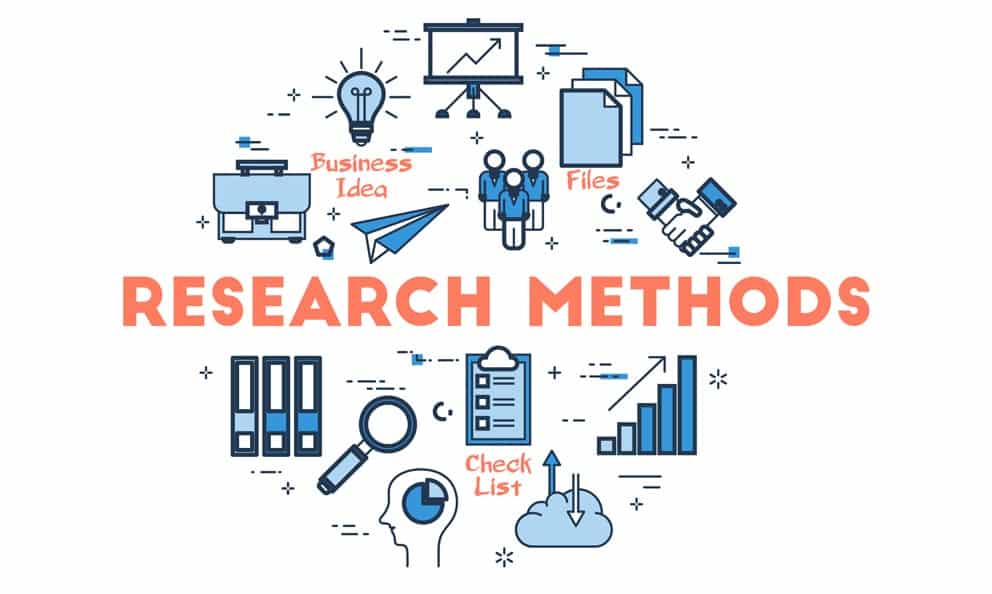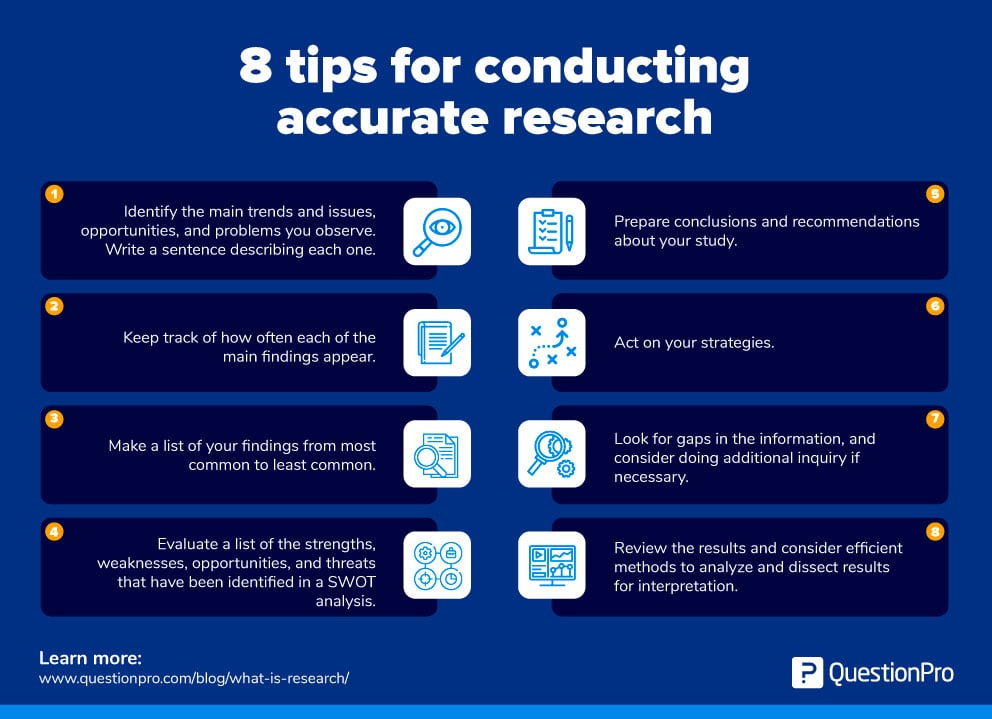what is an accurate way to describe sport management?
What is Research?
Definition: Research is defined equally careful consideration of study regarding a particular concern or problem using scientific methods. Co-ordinate to the American sociologist Earl Robert Babbie, "research is a systematic enquiry to describe, explain, predict, and control the observed phenomenon. It involves inductive and deductive methods."
Inductive enquiry methods analyze an observed event, while deductive methods verify the observed event. Anterior approaches are associated with qualitative research , and deductive methods are more unremarkably associated with quantitative assay.
Research is conducted with a purpose to:
- Identify potential and new customers
- Understand existing customers
- Fix businesslike goals
- Develop productive marketplace strategies
- Address business challenges
- Put together a business concern expansion plan
- Place new business organisation opportunities
What are the characteristics of research?
- Expert research follows a systematic approach to capture accurate data. Researchers need to practice ethics and a code of conduct while making observations or drawing conclusions.
- The analysis is based on logical reasoning and involves both inductive and deductive methods.
- Existent-time information and cognition is derived from bodily observations in natural settings.
- There is an in-depth assay of all information nerveless so that there are no anomalies associated with it.
- It creates a path for generating new questions. Existing data helps create more research opportunities.
- It is belittling and uses all the bachelor data so that there is no ambivalence in inference.
- Accuracy is one of the almost critical aspects of enquiry. The data must be accurate and right. For example, laboratories provide a controlled environment to collect data. Accuracy is measured in the instruments used, the calibrations of instruments or tools, and the experiment's last outcome.
What is the purpose of research?
At that place are three chief purposes:
- Exploratory: Every bit the name suggests, researchers conduct exploratory studies to explore a group of questions. The answers and analytics may not offer a determination to the perceived problem. It is undertaken to handle new trouble areas that haven't been explored before. This exploratory process lays the foundation for more conclusive data collection and assay.
- Descriptive: It focuses on expanding knowledge on current bug through a process of data collection. Descriptive enquiry describe the behavior of a sample population. Only i variable is required to conduct the study. The 3 primary purposes of descriptive studies are describing, explaining, and validating the findings. For example, a study conducted to know if elevation-level management leaders in the 21st century possess the moral right to receive a considerable sum of money from the company profit.
- Explanatory: Causal or explanatory research is conducted to understand the impact of specific changes in existing standard procedures. Running experiments is the nigh pop form. For instance, a study that is conducted to sympathise the upshot of rebranding on customer loyalty.
Here is a comparative assay for better understanding:
| Exploratory Research | Descriptive Research | Explanatory Inquiry | |
| Approach used | Unstructured | Structured | Highly structured |
| Conducted through | Asking questions | Asking questions | By using hypotheses. |
| Fourth dimension | Early stages of decision making | Later stages of determination making | After stages of decision making |
Research begins by asking the correct questions and choosing an appropriate method to investigate the trouble. After collecting answers to your questions, you lot tin can analyze the findings or observations to describe reasonable conclusions.
When information technology comes to customers and market place studies, the more thorough your questions, the meliorate the assay. You get essential insights into brand perception and production needs by thoroughly collecting client information through surveys and questionnaires. You can apply this data to brand smart decisions about your marketing strategies to position your business effectively.
To be able to make sense of your research and get insights faster, it helps to use a research repository as a single source of truth in your arrangement and to manage your research information in one centralized repository.
Types of research methods and example

Research methods are broadly classified as Qualitative and Quantitative .
Both methods have distinctive properties and data collection methods.
Qualitative methods
Qualitative inquiry is a method that collects data using conversational methods, commonly open-ended questions. The responses collected are essentially non-numerical. This method helps a researcher understand what participants think and why they call back in a detail way.
Types of qualitative methods include:
- One-to-one Interview
- Focus Groups
- Ethnographic studies
- Text Analysis
- Instance Study
Quantitative methods
Quantitative methods bargain with numbers and measurable forms. It uses a systematic way of investigating events or data. It answers questions to justify relationships with measurable variables to either explain, predict, or control a miracle.
Types of quantitative methods include:
- Survey research
- Descriptive enquiry
- Correlational enquiry
Remember, research is only valuable and useful when it is valid, accurate, and reliable. Incorrect results can atomic number 82 to client churn and a decrease in sales.
Information technology is essential to ensure that your data is:
- Valid – founded, logical, rigorous, and impartial.
- Accurate – free of errors and including required details.
- Reliable – other people who investigate in the same way can produce like results.
- Timely – current and nerveless within an appropriate fourth dimension frame.
- Complete – includes all the data you need to support your business organization decisions.
Gather enquiry insights
eight tips for conducting authentic research

- Identify the master trends and bug, opportunities, and problems you observe. Write a sentence describing each ane.
- Proceed track of the frequency with which each of the primary findings appears.
- Make a list of your findings from the near common to the to the lowest degree mutual.
- Evaluate a list of the strengths, weaknesses, opportunities, and threats that accept been identified in a SWOT analysis.
- Set conclusions and recommendations about your study.
- Deed on your strategies
- Await for gaps in the information, and consider doing additional inquiry if necessary
- Program to review the results and consider efficient methods to analyze and dissect results for interpretation.
Review your goals before making any conclusions almost your research. Keep in mind how the procedure yous take completed and the information you lot have gathered help answer your questions. Ask yourself if what your analysis revealed facilitates the identification of your conclusions and recommendations.
Source: https://www.questionpro.com/blog/what-is-research/
0 Response to "what is an accurate way to describe sport management?"
Post a Comment